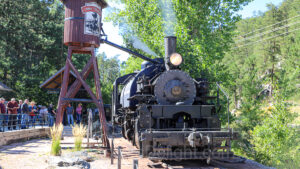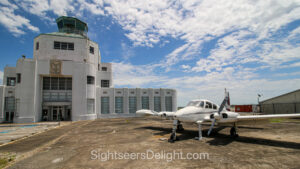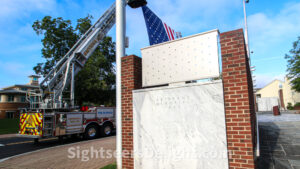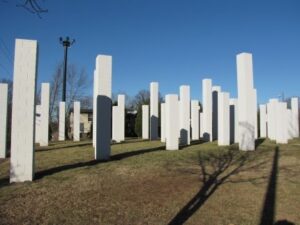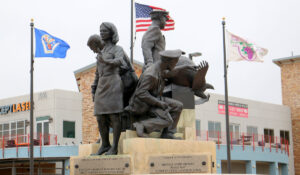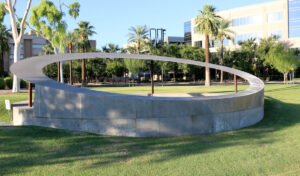
Guidebooks are annoying. Just because some editor who doesn’t know me tells me which restaurant is the best or what attraction is a must-see doesn’t make it a must-see attraction. Sightseers’ Delight is dedicated to the weird, the quirky and the fun. After all, traveling is fun.
If it’s not, you’re doing it wrong.
All of the places highlighted in this ever-growing database are great. Sightseers’ Delight has visited them all. We think you should make a point to see every one of them. But, this is not a guidebook. Just a webpage to help you plan your next adventure.
The Black Hills Central Railroad operates the 1880 Train between Hill City, South Dakota, and Keystone, South Dakota, on the Burlington Northern Railroad’s former Keystone Branch. The Chicago, Burlington and Quincy Railroad built the line to serve mining and timber interests, reaching Keystone on January 20, 1900. The line later hauled carving equipment for Mount Rushmore. The Black Hills Central acquired the 10-mile-long in 1981. In 1986 Burlington Northern abandoned the Deadwood branch between Hill City and Deadwood.
57745
Lumpkin County built its now historic jail in 1884. It features jail cells on the building’s second floor. The sheriff or a deputy lived on the ground floor. The National Register of Historic Places added the building to its list in 1985. Inside, visitors can glimpse the jail’s iron cell doors and scribbles inmates on the cell walls as they passed the time.
30533
The 1940 Air Terminal Museum is located at at William P. Hobby Airport and housed in the original art deco building which served as the first purpose-built terminal for passenger flight in Houston. The museum features collections focusing on civil aviation history in Space City. It is operated by the Houston Aeronautical Heritage Society (HAHS), a non-profit organization.
77061
The 20th Century Veterans Memorial in downtown Smyrna, Georgia, was dedicated on October 12, 2002. A Veterans Memorial Committee chose the site for the monument in August 1999, and it was expected to be finished by Labor Day 2001 at a cost of between $1 million and $1.5 million. In March 2000, the Smyrna City Council and the Smyrna Downtown Development Authority signed off on the plan despite opposition from nearby residents. However, work was delayed about a year, and officials broke ground on the project in January 2002. Then-Gov. Roy Barnes, U.S. Rep. Johnny Isakson and U.S. Sen. Max Cleland were among the dignitaries at the memorial’s dedication. A mix of private and state money funded the $650,000 memorial.
30080
Perched on the 94th floor of John Hancock Center is 360 Chicago. The observatory, 1,000 feet above The Magnificent Mile, gives visitors the chance to see four states — Illinois, Indiana, Michigan and Wisconsin — and as far away as 55 miles. On a clear day, anyway. The John Hancock Center is the fourth-tallest building in the city and the seventh-tallest nationwide. To reach the top, guests board elevators that travel 1,800 feet per minute, completing the trip to the 94th floor in a mere 40 seconds.
60611
The storied history of the 48th Highlanders of Canada, a part-time militia, is on full display in this delightful museum in the basement of St. Andrew’s Church. The museum displays a range of photographs, artifacts and uniforms to bring the unit to life. The museum was founded in 1959 and has been located in St. Andrew’s Church since 1997. Former unit members staff the museum and are more than willing to share personal anecdotes, further enhancing the visitor experience.
54 Columns is a collection of 54 columns ranging from 10 to 20 feet tall. It was created in 1999 by Sol LeWitt, a minimalist artist. Known to some as Ghetto Stonehenge, the columns are supposed to resemble the Atlanta skyline. The art project was commissioned by the Fulton County Arts Council. In 2007, the Atlanta City Council designated the 210-acre Freedom Park, which is home to 54 Columns, as an Atlanta Public Art Project. LeWitt’s works can be seen in a number of museums nationwide, including the High Museum of Art in Atlanta. The Connecticut-born LeWitt died in 2007 at the age of 78.
30312
The 9/11 Flight Crew Memorial was born out of American Airlines Flight Attendant Valerie Thompson’s desire to honor the crewmembers killed on the planes hijacked on Sept. 11: American Airlines flights 11 and 77 and United Airlines flights 93 and 175. Her dream became reality when the monument was dedicated on July 4, 2008. Based on a design by Bryce Cameron Liston of Salt Lake City, Utah, and sculpted by Dean Thompson, the memorial features bronze sculptures of two pilots, two flight attendants and a child who represents the traveling public. The memorial’s base stands 18 feet tall. The names of crewmembers on the four flights are engraved on slabs of granite surrounding the base.
76051
Located at the Wesley Bolin Memorial Plaza near the State Capitol in Phoenix, the 9/11 Memorial in Arizona was unveiled on Sept. 11, 2006. The memorial is often — and perhaps best — described as a circular plan with a flat inclined metal ring. The memorial opened to some controversy. The controversy centered on a number of quotes engraved into the ring, including “Congress Questions Why CIA and FBI Didn’t Prevent Attacks” and “You Don’t Win Battles of Terrorism With More Battles.”
Formerly the Hiroshima Prefecture Industrial Promotion Hall, this building was completed in April 1915, and was located near the bomb’s hypocenter. It is one of the few buildings to survive the blast. Historic photographs of the city show a landscape flattened by the blast, with just a few structures still standing — one being the shell of the Industrial Promotion Hall. But, the building, which has not changed significantly since the bombing, is just one of a few important landmarks dedicated to Aug. 6, 1945.

